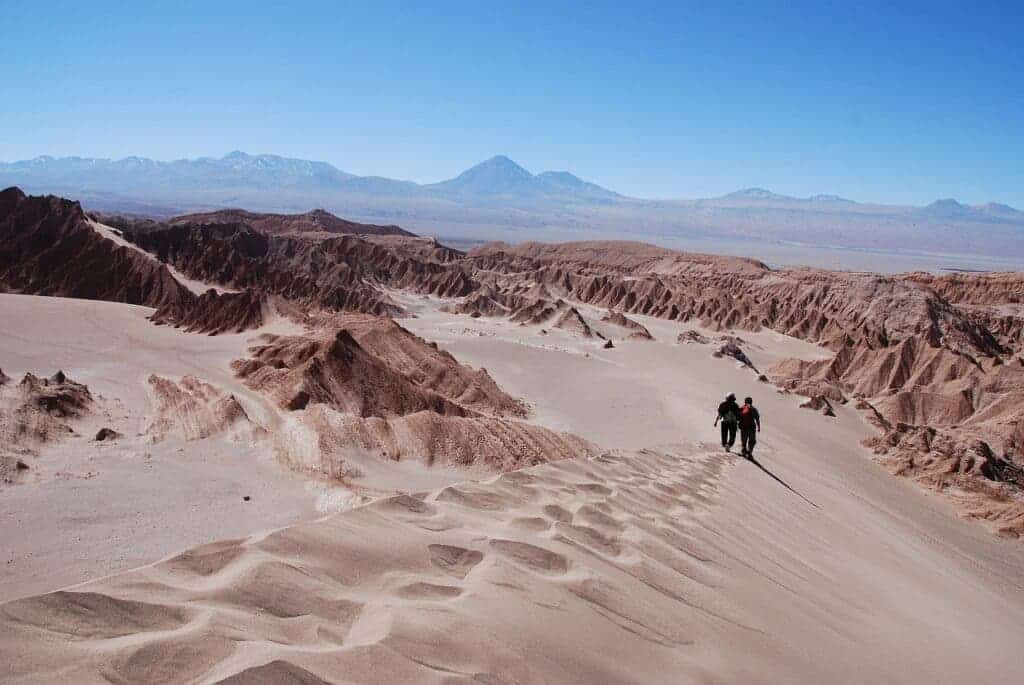
For years, Chilean researchers have collected plant samples from the Atacama Desert and sequenced their DNA in an effort to understand how, against all odds, they’re able to withstand one of the harshest places on Earth. In a new study, the scientists have reported a range of genes that have enabled these hardy plants to flourish with no rainwater — and which, in the future, may help our food crops cope with increasingly dried climates.
Life finds a way even in a Mars-like environment
The Atacama Desert in Chile stretches across a roughly 600-mile (1,000-kilometer) tract of land wedged between the coastal Cordillera de la Costa mountain range and the Andes Mountains, an unusual topography that blocks rainfall from the east and prevents the formation of clouds of rain. The annual rainfall across the Atacama is only 15 millimeters, which makes it the driest place on Earth by far. Some parts of the desert see rain only once in a couple of centuries and its extreme arid landscape has made it a film director’s favorite place to shoot movies about Mars.
But even though the Atacama Desert sounds like a hell hole, there are some plants that have found a way to cope with the extreme dryness, high altitude, poor nutrient soil, and excessive radiation from the sun. These are generally small, deep-rooted, thorny plants that can reach deep underground to capture some of the moisture found there. These include the saltbush, tufted grass, buckwheat bush, black bush, ‘tola’ shrubs, rice grass, ferns, little leaf horsebrush, black sage, and chrysothamnus.
For the last decade, Rodrigo Gutiérrez, professor in the Department of Molecular Genetics and Microbiology at Pontificia Universidad Católica de Chile, has collected plants from 22 different sites covering a wide range of vegetation and elevations. For each sample, Gutiérrez and colleagues recorded a variety of factors, such as temperature, radiation levels, soil quality, and water content.
This characterization for each sample, along with DNA sequencing, allowed the researchers to assemble a genetic profile for 32 of the most important plant species in the Atacama. The analysis also assessed the plant-associated soil microbes based on these DNA sequencing, showing that some of the plants developed symbiotic bacteria near their roots that optimize the intake of nitrogen, a critical nutrient for plant growth that is severely lacking in this desert.

Colleagues at New York University led by Gloria Coruzzi from the Department of Biology and Center for Genomics and Systems Biology identified the specific genes that are associated with adaptations in the Atacama plants by comparing the 32 desert plants with 32 non-adapted but genetically similar “sister” species.
“The goal was to use this evolutionary tree based on genome sequences to identify the changes in amino acid sequences encoded in the genes that support the evolution of the Atacama plant adaptation to desert conditions,” said Coruzzi.
Beefing up food crops
This state-of-the-art genetic analysis pinpointed 265 genes whose protein sequence may have been selected by evolutionary forces, forged by millions of years of life in the harsh Atacama desert. These include genes involved in photosynthesis that may allow the plants to cope with the high radiation, as well as those involved in the regulation of stress, salt, and metal ions, which may explain how the plants can grow in the nutrient-poor soil.
“Our study of plants in the Atacama Desert is directly relevant to regions around the world that are becoming increasingly arid, with factors such as drought, extreme temperatures, and salt in water and soil posing a significant threat to global food production,” said Gutiérrez, who likens the findings to a “genetic goldmine”.
Some of the Atacama plants are related to staple crops, such as grains, legumes, and potatoes. As such, these newly identified candidate genes could be used to engineer more resilient crops and improve our food security in the face of increased desertification of the planet.
The findings appeared in the journal Proceedings of the National Academy of Sciences.









